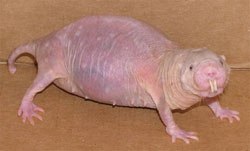Tazmanian Devil
The Tasmanian Devil (Sarcophilus harrisii), also referred to simply as ‘the devil’, is a carnivorous marsupial now found only in the Australian island state of Tasmania. The Tasmanian Devil is the only extant member of the genus Sarcophilus. The size of a small dog, but stocky and muscular, the Tasmanian Devil is the largest carnivorous marsupial in the world. It is characterised by its black fur, offensive odour when stressed, extremely loud and disturbing screech, and viciousness when feeding. It is known to both hunt prey and scavenge carrion and although it is usually solitary, it sometimes eats with other devils.
The Tasmanian Devil became extirpated on the Australian mainland about 400 years before European settlement in 1788. Because they were seen as a threat to livestock in Tasmania, devils were hunted until 1941, when they became officially protected. Since the late 1990s devil facial tumour disease has reduced the devil population significantly and now threatens the survival of the species, which may soon be listed as endangered. Programs are currently being undertaken by the Tasmanian government to reduce the impact of the disease. More..
Habitat
Devils are widespread in Tasmania from the coast to the mountains. They live in coastal heath, open dry sclerophyll forest, and mixed sclerophyll-rainforest — in fact, almost anywhere they can hide and find shelter by day, and find food at night.
Breeding
Devils usually mate in March, and the young are born in April. Gestation is 21 days. More young are born than can be accommodated in the mother’s backward-opening pouch, which has 4 teats. Although 4 pouch young sometimes survive, the average number is 2 or 3. Each young, firmly attached to a teat, is carried in the pouch for about 4 months.
After this time the young start venturing out of the pouch and are then left in a simple den – often a hollow log. Young are weaned at 5 or 6 months of age, and are thought to have left the mother and be living alone in the bush by late December. They probably start breeding at the end of their second year. Longevity is up to 7-8 years
Diet
The devil is mainly a scavenger and feeds on whatever is available. Powerful jaws and teeth enable it to completely devour its prey — bones, fur and all. Wallabies, and various small mammals and birds, are eaten — either as carrion or prey. Reptiles, amphibians, insects and even sea squirts have been found in the stomachs of wild devils.
Carcasses of sheep and cattle provide food in farming areas. Devils maintain bush and farm hygiene by cleaning up carcasses. This can help reduce the risk of blowfly strike to sheep by removing food for maggots.
Devils are famous for their rowdy communal feeding at carcasses — the noise and displays being used to establish dominance amongst the pack. More..


